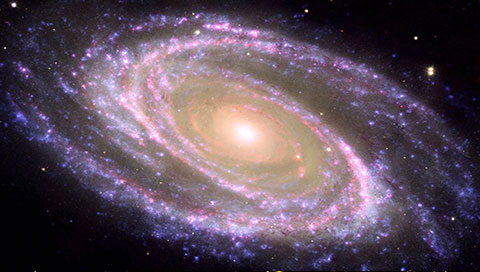
During the 1970s, when Raleigh Chopper bicycles were in, Doctor Who was reaching its peak, Led Zeppelin were storming the world and love was on the rise, a curious thing happened. A space probe named the Voyager 1 was launched.
However, unlike other pesky probes of its persuasion, this one was ladened with earthly recordings of love. Twenty seven songs, ranging from Chuck Berry, to Beethoven, to songs from the Navajo Indians and Australian Aborigines.
Also on board are sounds of humpback whales, along with 55 languages, six of which are now extinct.
Author and TV producer Anne Druyen also stored the electrical activity of her brain while she was reading philosophy, and when she was thinking about the time she fell in love with US astronomer and author Carl Sagan.
This was all in the hope the probe would bump into an alien civilisation and reveal our way of life (albeit positively skewed).
Well, after 35 years of space travel, at 13 kilometres a second, the Voyager 1 is about to cross into entirely new territory. Interstellar space.
Dr Ed Stone, the former director of NASA’s Jet Propulsion Laboratory, says “we don’t know what is in interstellar space because it can’t get inside our solar system. The first man-made object launched from Earth to cross into interstellar space will be an historic moment.”
Right now the Voyager 1 is so far from the Sun it’s experiencing temperatures 10,000 times colder than on Earth.
Not far behind is the probe’s sister Voyager 2, and both are on the edge of a shield the sun throws around the solar system known as the heliosphere. This shield protects our solar system from the cosmic rays and particles that fire across the universe in cosmic fury.
It looks like these little 70s love capsules are in for one hell of a ride.
Hold on babies. Hold on and spread the love.
Dear Andy,
An informative and probing piece. Thankyou. I have often wondered who will get all that priceless info in the capsule. It is also amazing that the sun throws out a protective force field to shield our cute little planetary system.
I was asked to put several of John Holmes scenes on a laser disk back in the weeks before launch. These are on the first probe. I wonder if they will be seen someday by some aliens. I hope so, they are some of human kinds finest pornographic moments.
Just my hopes and dreams still live as I am dying from a broken heart.
Peace W A
William Spittle,
I thank you most heartily for your ambiguous message of space and love in a time of change.
You sound, naughty, sweet, inspired and sad.
John Holmes was indeed a prober, thus I believe your task was a fitting one.
Take care Mr Spittle,
Mr Fox.